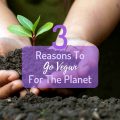
Food Can Heal the World
by Ann Gentry
That’s a pretty big statement! Remember the song, “We can heal the world?” How could anyone in the last 20 years forget? Love: heal the world, food: heal the world. Love and food are interconnected, but lately food seems to be getting a lot of people in a lot of trouble. In these same twenty years, statistically, the world over, people are getting bigger and more overweight. More processed food is being eaten and tight money times are pushing people toward cheap, comforting fast-food. But for all the poor choices of food being pushed at us, there are plenty of good ones too. With films like Food Inc and advocates like Michael Pollan and Jamie Oliver, an intelligence about food, a ‘real food’ consciousness, is starting to take shape. The old expression “you are what you eat” is starting to hit home. We are starting to see a big push from schools starting to offer cooked-from-scratch meals to students. This is happening all over America and not just in the Berkeley, California Unified School district where the idea was seeded. Families everywhere are seeing that shopping in local farmers market is a change-making act. In any size grocery store, from local to supermarket, reading a label carefully can change your life for the better.

Time magazine wrote recently about how foodies might be getting more optimistic than the environmentalists. Organic, small-scale production is not only changing the way food is grown but also the way we relate to each other. We can connect at the restaurants we love and the farmer’s markets we visit. And this movement is not necessarily a big, centralized event. As the Time Magazine writer, Bryan Walsh, put it, “What makes the food movement so unusual is that it’s not a single national movement at all, it’s a series of organized smaller mobilizations.”

Urban farms are springing up around the country. Even in big cities, like LA, architects like Robin Osler are contributing their talents to projects like The Food Chain, which is a vertical garden project designed to bring fresh produce to urban areas. CNN recently quoted a resident of Atlanta who described urban farming as a “reawakening and a renaissance.” Cashawn Myers, director of an urban farming group called HABESHA said, “Even if you look at coming over here [to the US] during our enslavement, we were brought here to cultivate the land because that’s something we did on the continent [of Africa].”
Many people of all walks of life are finding empowerment in growing their own food in their yards, taking composting seriously and choosing to eat lower on the food chain.
There’s a Ghanaian proverb that refers to the concept of Sankofa. Sankofa means ‘return to your past so you can move forward.’ We’ve still got a ways to go. Just one percent of all crops in the US are grown organically, and by most estimates, only four percent of the food and drinks found in conventional supermarkets are organic. But we know that growing food organically is better for the people who grow it (they aren’t exposed to pesticides and chemicals) and better for the planet. Local sourcing and fresh ingredients are seen as important for the future as they are for healthy living, not just for fun foodie reasons. Sure, organic tastes better. But it’s also making the world better. And just like the song says, “if you care enough for the living make a better place for you and for me” and I would add ‘for the future generations to come.’
Ann Gentry
Founder and Restaurateur, Real Food Daily | On HappyCow- West Hollywood, Santa Monica
Author, Vegan Family Meals, real food for everyone
All photos via Creative Commons License.




No Comments